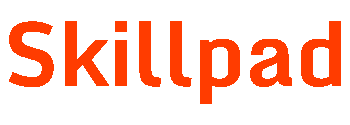The hiring process can be overwhelming, whether you are a job seeker or an employer. It seems like there’s an entire language dedicated to hiring, with acronyms and terms that can leave you scratching your head. To navigate this landscape with confidence, it’s crucial to familiarize yourself with the hiring glossary. In this blog post, we’ll demystify the most common terms and concepts you’re likely to encounter during the hiring process.
Job Description:
The job description is a document that outlines the responsibilities, qualifications, and expectations for a particular job opening. It provides candidates with a clear understanding of what the role entails and helps employers attract suitable candidates.
Resume:
A resume is a concise summary of a candidate’s education, work experience, skills, and achievements. It is typically submitted by applicants to showcase their qualifications and suitability for a job.
CV (Curriculum Vitae):
Similar to a resume, a CV is a comprehensive document that provides an overview of a candidate’s education, work history, skills, publications, and other relevant information. CVs are commonly used in academia, research, and certain professions.
Applicant Tracking System (ATS):
An ATS is software used by employers to manage and streamline the hiring process. It allows them to track and screen candidates, store resumes, schedule interviews, and automate various aspects of recruitment.
Screening:
Screening refers to the process of reviewing resumes or applications to shortlist candidates who meet the minimum requirements for a position. This initial assessment helps employers identify potential candidates for further evaluation.
Interview:
An interview is a formal meeting between employers and candidates to assess their qualifications, skills, and fit for a job. Interviews can take various formats, including phone interviews, video interviews, panel interviews, and one-on-one interviews.
Behavioral Interview:
A behavioral interview is an interview technique that focuses on past behaviors and experiences to predict future performance. Employers ask candidates to provide specific examples of how they handled certain situations or challenges, aiming to assess their skills and competencies.
Reference Check:
A reference check involves contacting individuals provided by the candidate as references to verify their qualifications, work history, and character. Employers use this process to gather additional information and validate the candidate’s suitability for the job.
Offer Letter:
Once a candidate has successfully gone through the selection process, the employer extends an offer letter, which outlines the terms and conditions of employment, including compensation, benefits, start date, and other relevant details.
Onboarding:
Onboarding is the process of integrating a new employee into an organization. It includes activities such as orientation, training, and providing the necessary resources to help the employee become productive and acclimated to their new role.
Background Check:
A background check is a process in which employers verify the accuracy of a candidate’s information, such as employment history, education, criminal records, and professional licenses. It helps employers ensure the candidate’s qualifications and suitability for the role.
Pre-Employment Assessment:
Pre-employment assessments are tests or evaluations used by employers to measure a candidate’s skills, abilities, personality traits, or cognitive capabilities. These assessments provide additional insights into a candidate’s suitability for a position.
Hiring Manager:
The hiring manager is the person responsible for overseeing the recruitment process and making the final decision on which candidate to hire. They work closely with HR teams and interviewers to evaluate candidates and determine the best fit for the organization.
Job Board:
A job board is an online platform or website where employers post job openings and candidates can search and apply for those positions. Examples of popular job boards include LinkedIn, Indeed, and Glassdoor.
Diversity and Inclusion:
Diversity and inclusion refer to policies and practices aimed at creating a workforce that encompasses individuals from diverse backgrounds, cultures, and experiences. Employers strive to foster an inclusive environment that values and respects the differences among employees.
Cultural Fit:
Cultural fit refers to how well a candidate’s values, beliefs, and behaviors align with the company’s culture. Employers assess cultural fit to ensure that the candidate will thrive and contribute positively to the organization’s work environment.
Counteroffer:
A counteroffer is a response from an employer to a candidate’s job offer, proposing different terms or conditions than the original offer. This can include changes to salary, benefits, or other aspects of the employment package.
Remote Work:
Remote work, also known as telecommuting or teleworking, refers to the practice of working from a location outside the traditional office environment. It allows employees to perform their job duties remotely, often utilizing technology and online communication tools.
Applicant:
An applicant is an individual who submits an application for a job opening. This term is used to refer to candidates who are in the initial stages of the hiring process, before being selected or rejected.
Job Requisition:
A job requisition is a formal request from a hiring manager or department to fill a vacant position within an organization. It outlines the job title, duties, qualifications, and other requirements necessary for the role.
Passive Candidate:
A passive candidate refers to someone who is currently employed and not actively seeking a new job but may be open to considering new opportunities if presented. Employers often engage in targeted outreach to attract passive candidates.
Talent Acquisition:
Talent acquisition is the process of identifying, attracting, and acquiring skilled individuals to fill specific job openings within an organization. It involves strategic planning, sourcing, and engaging with potential candidates.
Employer Branding:
Employer branding is the process of shaping and promoting an organization’s reputation and image as an employer. It involves highlighting the company’s culture, values, benefits, and opportunities to attract and retain top talent.
Behavioral Assessment:
A behavioral assessment evaluates a candidate’s behavior, personality traits, and preferences to predict their potential fit within a role or organization. These assessments often use psychometric tests or behavioral questionnaires.
Outplacement:
Outplacement services are provided by employers to support employees who are leaving the organization due to layoffs or restructuring. It involves assistance with job search, resume writing, career coaching, and other resources to help individuals transition to new employment.
Job Offer Negotiation:
Job offer negotiation is the process of discussing and reaching mutually agreeable terms between an employer and a candidate after a job offer has been extended. It typically involves negotiations related to compensation, benefits, start date, or other conditions.
Talent Pipeline:
A talent pipeline refers to a pool of potential candidates who have expressed interest in working for an organization or who have been identified as potential future hires. Employers nurture and engage with these candidates to build relationships over time.
Employee Referral Program:
An employee referral program is a structured initiative by employers to encourage their current employees to refer qualified candidates for job openings within the organization. Referrals are typically rewarded with incentives or bonuses.
Job Shadowing:
Job shadowing is a process in which a candidate or employee observes and follows a current employee in their day-to-day tasks and responsibilities. It provides insights into the role and helps individuals gain a better understanding of the job.
Talent Pool:
A talent pool refers to a database or list of potential candidates who have expressed interest in working for an organization or have been identified as strong candidates in previous hiring processes. Employers can draw from this pool when new positions become available.
Talent Management:
Talent management refers to the strategic processes and practices involved in attracting, developing, and retaining skilled individuals within an organization. It includes activities such as succession planning, career development, and performance management.
Panel Interview:
A panel interview is an interview format where multiple interviewers, typically representing different stakeholders within the organization, collectively assess a candidate. Each panel member asks questions and evaluates the candidate’s responses.
Job Market:
The job market refers to the current state of employment opportunities and the overall demand for jobs in a particular industry, region, or economy. It influences factors such as job availability, competition, and salary levels.
Candidate Experience:
Candidate experience refers to the overall perception and impression a candidate has of the hiring process and the organization. It encompasses every interaction, from the initial application stage to the final decision, and influences the candidate’s perception of the company’s culture and employer brand.
On-Demand Hiring:
On-demand hiring refers to the practice of quickly and flexibly hiring individuals to meet immediate business needs, often utilizing temporary or contract workers. It allows organizations to adapt to fluctuating workloads or specific project requirements.
Succession Planning:
Succession planning is a strategic process through which organizations identify and develop internal talent to fill key leadership or critical roles in the future. It ensures a smooth transition and continuity of operations when key employees leave or retire.
Job Aggregator:
A job aggregator is a website or platform that collects job listings from various sources, such as company websites, job boards, and staffing agencies, and displays them in a centralized location. Job seekers can search and apply for multiple positions through the aggregator.
Candidate Persona:
A candidate persona is a fictional representation of an ideal candidate for a specific role within an organization. It includes characteristics such as skills, experience, personality traits, and motivations, helping employers target and attract suitable candidates.
Employment Branding:
Employment branding involves actively promoting an organization’s reputation as an employer of choice. It encompasses the company’s values, culture, benefits, and unique selling points to attract top talent and differentiate it from competitors.
Remote Hiring:
Remote hiring refers to the process of hiring candidates who will work remotely or from a location outside the physical office. It includes remote interviews, virtual onboarding, and ensuring the necessary tools and communication platforms are in place for remote work.
Skills Gap:
The skills gap refers to the mismatch between the skills and qualifications job seekers possess and the skills and qualifications that employers require for specific job roles. It is often identified as a challenge in industries where the demand for certain skills exceeds the available supply.
Assessment Center:
An assessment center is a structured evaluation process used by employers to assess candidates’ competencies, skills, and aptitude for a particular job. It typically involves a series of exercises, simulations, and assessments conducted over a specified period.
Gig Economy:
The gig economy refers to a labor market characterized by the prevalence of short-term or freelance work arrangements, often facilitated through digital platforms or apps. Workers in the gig economy are typically independent contractors and have flexibility in choosing their projects.
Exit Interview:
An exit interview is a conversation conducted between an employer and an employee who is leaving the organization voluntarily or involuntarily. It provides an opportunity for the employee to provide feedback on their experience, reasons for leaving, and suggestions for improvement.
Employer of Choice:
An employer of choice is an organization that is highly regarded by job seekers due to its positive work culture, employee benefits, growth opportunities, and other attractive factors. Being an employer of choice helps attract and retain top talent.
Internal Recruitment
Internal Recruitment:Internal recruitment involves filling job vacancies within an organization by considering existing employees for the role. It can be done through promotions, transfers, or other internal mobility programs, enabling organizations to leverage the skills and experience of their current workforce.
Cost per Hire:
Cost per hire is a metric that calculates the total expenses incurred by an organization to fill a job opening. It includes costs associated with advertising, recruitment agencies, interviewing, background checks, and onboarding.
Workforce Planning:
Workforce planning is a strategic process that helps organizations anticipate and address future talent needs. It involves analyzing current workforce capabilities, identifying skill gaps, and developing strategies to acquire, develop, and retain the right talent.
Employer Value Proposition (EVP):
The employer value proposition refers to the unique combination of benefits, rewards, and opportunities that an employer offers to its employees in exchange for their skills, contributions, and commitment. It serves as a key factor in attracting and retaining top talent.
Transferable Skills:
Transferable skills are skills and abilities that can be applied and utilized across different roles, industries, or job settings. These skills, such as communication, problem-solving, and leadership, are not specific to a particular job and can be valuable in various contexts.
Candidate Persona:
A candidate persona is a semi-fictional representation of the ideal candidate for a specific role, based on research, data, and insights. It goes beyond demographics to capture characteristics, motivations, aspirations, and preferences, enabling targeted recruitment strategies.
Outbound Recruiting:
Outbound recruiting is a proactive approach to talent acquisition, where employers actively search for and reach out to potential candidates who may not be actively looking for job opportunities. It involves direct sourcing, networking, and engaging with passive candidates to generate interest and build relationships.
Employee Value Proposition (EVP):
The employee value proposition (EVP) is the unique set of benefits, rewards, and opportunities that an employer offers to its employees in exchange for their contributions. It encompasses the overall value and experience an employee can expect from working for the organization.
Diversity Hiring:
Diversity hiring is the intentional effort to attract, recruit, and retain candidates from diverse backgrounds, including those from different races, ethnicities, genders, ages, abilities, and perspectives. It aims to create a more inclusive and representative workforce.
Boomerang Employee:
A boomerang employee is an individual who leaves an organization voluntarily or involuntarily but later returns to work for the same company at a later point in their career. These employees bring back previous knowledge, experience, and familiarity with the organization’s culture.
Navigating the hiring process can be complex and overwhelming, but having a solid understanding of recruitment terminology is key to success. In this comprehensive glossary, we have covered 50 essential terms, ranging from applicant and background check to remote hiring and workforce planning. By familiarizing yourself with these terms, you’ll be equipped to communicate effectively, make informed decisions, and navigate the intricacies of the recruitment landscape with confidence.
Whether you’re a job seeker looking to understand the hiring process or an employer seeking to streamline your recruitment efforts, this glossary serves as a valuable resource. Stay up-to-date with the evolving terminology and continue expanding your knowledge to stay ahead in the competitive world of hiring.
Embrace the terminology, explore its nuances, and leverage your understanding to make strategic choices that lead to successful hiring outcomes. With this knowledge in your toolkit, you’re well-prepared to excel in the dynamic world of talent acquisition.




